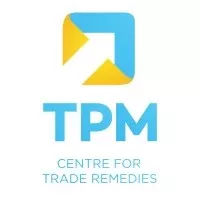- in United States
- within Media, Telecoms, IT, Entertainment and Antitrust/Competition Law topic(s)
Indian Updates
Trade negotiations with Peru and Chile to accelerate for finalizing the agreements by the end of 2025
India aims to push the conclusion of its respective CEPAs with Chile and Peru, by the end of 2025. Pursuant to the conclusion of the CEPA, India and Peru are expected to hold trade negotiations in November. The trade agreement under discussions between India and Chile aims to expand the Preferential Trade Agreement (PTA) signed between them in January 2025. Both sides are committed to enhancing cooperation in sectors such as mining, investment services, MSMEs and digital services.
India and the European Union conclude the 14th round of negotiations for the proposed Free Trade Agreement
India and the European Union have concluded the 14th round of trade negotiations. The discussions focused on key areas including goods, services, investment, and digital trade. The discussions also covered the previously stalled India - EU Investment Protection Agreement and the Geographical Indications Agreement. Indian exports of garments, pharma, steel and petroleum products are expected to gain competitive advantage in the EU market once the agreement is implemented. Both sides will continue to have discussions on the outstanding issues such as rules of origin, intellectual property rights, and dispute settlement mechanisms.
India and Brazil announce mutual commitment to expand the MERCOSUR–India Preferential Trade Agreement
India and Brazil have signed a joint statement declaring commitment to enhance the MERCOSUR – India PTA. Both sides aim to propose expansion of tariff and non-tariff measures supported by active stakeholder engagement and will aim to conclude the negotiations within a year of initiating them.
Global Updates
The UAE – Australia Comprehensive Economic Partnership Agreement (CEPA) comes into force
The UAE-Australia CEPA has entered in force with effect from 1st October 2025. The CEPA aims to periodically phase out tariffs on over 99% of Australian exports by value including exports of frozen red meat, wine and canola seeds. Other sectors which aim to benefit from the agreement include automotive, pharmaceuticals and investment services. The agreement will eliminate tariffs on exports of furniture, copper wire, glass containers and plastic from UAE.
The UAE – Malaysia Comprehensive Economic Partnership Agreement officially enters into force
The CEPA between UAE and Malaysia has come into effect on 1st October 2025. The CEPA will eliminate tariffs on over 90% of goods, streamline customs procedures, and will enhances market access across key sectors including energy, food production, and logistics. For the UAE, it will strengthen its position as a gateway to the Middle East and Africa, while Malaysia gains improved access to Gulf markets and investment opportunities.
ASEAN and China sign the revised China–ASEAN free trade agreement (CAFTA 3.0)
On 28th October 2025, the ASEAN bloc and China signed the expanded ASEAN and China endorsed CAFTA 3.0, during the 28th ASEAN–China Summit. CAFTA 3.0 is an upgradation to the 2002 free trade agreement. The new agreement includes nine additional chapters covering digital economy, green economy, and supply chain connectivity. The Agreement has been introduced amid rising global protectionism and aims to put China at a position of defender of free trade. CAFTA 3.0 is expected to further integrate the east Asian economies.
The USA announces trade agreement with Malaysia and Cambodia and framework agreement with Vietnam and Thailand
The USA has announced trade agreements and framework agreements with certain Asian countries, in light of imposition of reciprocal tariffs. Under the terms of the forthcoming trade agreement, Cambodia has committed to fully eliminating tariffs on US goods upon the implementation of the agreement. Malaysia has agreed to eliminate or reduce tariffs on selected US products, with specific reductions applied according to predetermined percentages. In exchange, the USAhas committed to cap its tariff rate at 19% on imports from both Malaysia and Cambodia and as agreed to not impose the reciprocal tariffs. Notably, the exports of rare earth materials from Malaysia have not been limited.
The USA along with Vietnam and Thailand, separately, have also announced frameworks for reciprocal trade agreements. Under said frameworks, the USA has capped the tariffs for Vietnam and Thailand at 19%. On the other hand, Thailand has agreed to eliminate tariff barriers on nearly 99 percent of goods, including the American industrial and food and agricultural products. Thailand has committed to accept and fully implement the World Trade Organization Agreement on Fisheries Subsidies.
The content of this article is intended to provide a general guide to the subject matter. Specialist advice should be sought about your specific circumstances.


